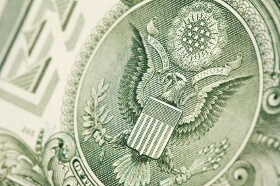
The US dollar had a mixed week as there was plenty of negative data from the United States, yet there also were positive indicators, especially employment figures. The greenback rose against the euro and the yen, but declined against higher-yielding currencies.
The US dollar started this week stronger against most of the currencies, but quickly turned to the downside as negative reports had begun to flow in. The Chicago Purchasing Managers’ Index and consumer confidence made a particularly nasty surprise as they were expected to improve, not to worsen as actually happened. Housing data was also bad.
What turned the dollar back to the upside by the end of the week was employment data. At first, it looked that employment was also deteriorating as a report from Automatic Data Processing was worse than market analysts anticipated. Later, declining unemployment claims and robust growth of non-farm payrolls proved that the US job market is in quite a good shape. The positive data no only increased appeal of the US currency, but also reduced probability of a next round of quantitative easing, further strengthening the dollar.
EUR/USD opened at 1.3224, fell to 1.3026, but rebounded and stayed little changed, ending the week at 1.3158. USD/JPY dropped from 76.65 to 76.01 (the lowest since October 31), but jumped in Friday, almost erasing gains and closing at 76.57. USD/CHF was traded generally sideways, but rose over the week from 0.9118 to 0.9178. AUD/USD slipped from 1.0636 to 1.0526 on Monday, but later rallied without pause, reaching 1.0769 by the end of the week.
If you have any questions, comments or opinions regarding the US Dollar,
feel free to post them using the commentary form below.